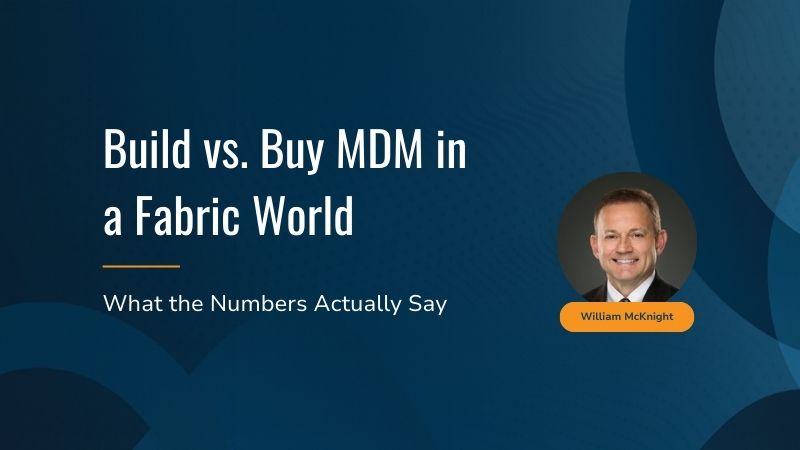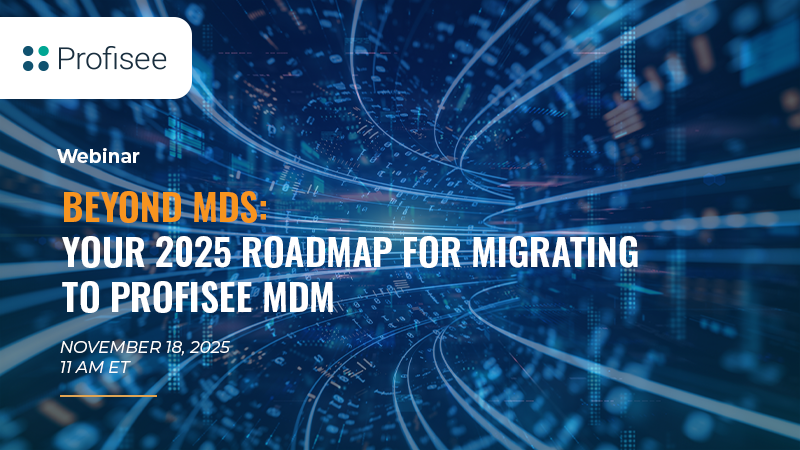Whether you are dealing with a global pandemic or the chaos of the holiday season, retailers need two things: Insight and Agility. Insight to understand rapidly changing customer behavior and Agility to be able to quickly react to it. Join us along with our partners, CCG and Microsoft and our customer, 7 Eleven for a virtual roundtable about some of the challenges currently facing Retailers and how they can be overcome with the right data organized in the right way.
Roundtable Discussion with Data Leaders
Today’s speakers include:
Chris Dieringer – General Manager, US Retail and Consumer Goods at Microsoft
Ojas Nivsarkar – Director of Enterprise Data and CRM at 7-Eleven
Malcolm Chisholm – Data Governance Expert at CCG
Moderated by Martin Boyd, VP Product Marketing at Profisee
What’s New in Retail and What’s Driving It?
Chris shares, “Of course, first and foremost you can’t talk about retail and not talk about COVID-19 and it’s impact. So, we are seeing this is really three parts: 1) navigating the now – in the beginning we were supporting crisis response centers, protecting employees, customer safety plans, etc… 2) planning the recovery – identifying market opportunities and what’s possible; and 3) planning for the future – shaping the new normal and reimagining how we live and work and plan for the long term.”
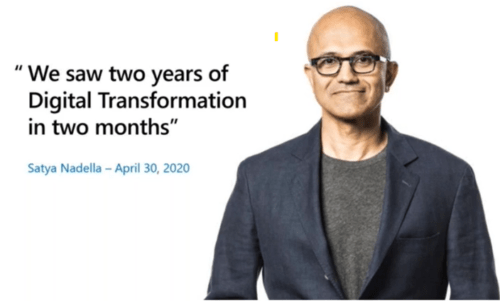
This quote is perfect, as Chris shares this is exactly what Microsoft and the market are seeing around retail – “a great acceleration.” There has been significant growth with online and digital shopping specifically through a store’s app – which helped gain tremendous loyalty with consumers. What’s been interesting is also some of the behavior changes that are occurring with 85% of shoppers saying they will definitely continue to shop online post-COVID-19. And as far as that concern for going back goes, 73% of those consumers are still hesitant to resume regular activities outside of the home.
And then leading into the holiday season we are seeing that consumers are switching brands at unprecedented rates, 75% of shoppers are starting new behaviors, 36% of consumers are trying new products with 73% of those intending to continue that within their day-to-day routine. The data is really interesting all around the retail sector and how it can impact consumers and companies.
It’s really interesting to see how this translates to how companies will respond to some of the demands happening in the retail sector. Here’s some insight into what is top of mind for retailers:
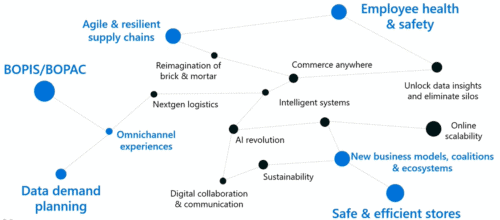
Many consumers said they are planning on shopping online and earlier this year for the holiday season. They are also comfortable with waiting, as long as the pickup times/delivery details are accurate. There are also situations that have occurred with some companies, like Publix, that partners with Instacart for delivery. And when the pandemic began and Instacart had workers on strike and Publix couldn’t meet those delivery terms, it wasn’t Instacart taking the brand hit, but Publix. And so, there is tremendous interest now with retailers to be able to know and understand their customers, find ways to develop the relationship based on the customer data, and figure out ways to help grow the relationship and business. And if that means using some services as a loss leader, then let the data drive that decision.
From a data and technology perspective, we are seeing this as computing on the edge: there are IoT devices in store, shelf analytics, supply chain disruption with parts/materials not available, product availability moving on and off shelves at unprecedented rates to other areas involving employee behavior with temperature scans and compliance with safety protocols. There is so much information being captured both structured and unstructured, and more than ever, companies need to capture, mine, and do something with this data at a fast pace.
Ojas shares a similar vision at 7-Eleven and even responding to unstructured data coming in via text and needing to be able to rapidly respond to the needs of consumers and employees.
Malcolm adds from the data governance perspective and thinking about how do you create actionable metrics to measure and track with the massive volume of data coming in from so many sources. You want to use the data to advance your ability to predict when there are potential problems, and/or opportunities to improve and drive a competitive edge.
Next, Malcolm shares more about data governance (DG), and the role it plays within retail – from things like getting customers to trust companies, which means customers will share more data, which means companies can provide a more meaningful and personalized customer experience. This all becomes possible at the intersection of MDM and DG.
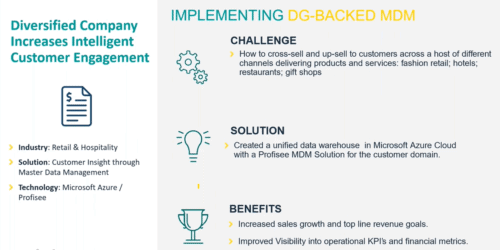
Martin shares in more detail about some specific ways MDM can help drive results for retailers.
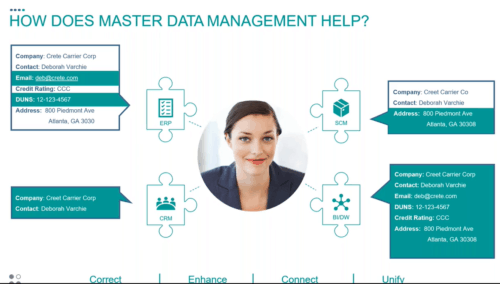
Martin shares Domino’s case study as they developed more targeted and strategic marketing plans to use in their app and for online orders.
Customer Story: 7-Eleven
Ojas shares more of the plans he led to implementing MDM for 7-Eleven. They are the largest retailer in the world based on locations including 71,000 locations in 18 countries. They wanted to roll out a Customer Loyalty program and they recognized the need for a common customer data platform. They began with 40 million customers – matched and de-duplicated the records and added enriched data to those records. 7-Eleven was able to meet the deadline for compliance for CCPA. But to 7-Eleven the most important goal for the project was to create a data foundation for analytics. They wanted to have a trusted foundation of clean data to better understand and capture customer behavior for better insights to provide programs and services the customers want. With this clean data foundation, they were better able to move quickly and create hyper-personalized promotions for customers driving sales and loyalty.
Additional phases include building out location/store data to capture and drive store analytics. What’s interesting and they hadn’t anticipated this need before COVID-19, but with the pandemic began the need to document and track store hours. Normally, around the world, 7-Eleven is actually open 24 hours, so this was never a priority to track or manage. But suddenly with the pandemic, the need to capture and display accurate store hour information was massive. So 7-Eleven built that functionality into their data foundation for stores.
In 2021, they plan to focus on product and building out the product data foundation so they can use that against the customer and store data they are already collecting, to look for patterns in sales as well as up-sell and cross-sell opportunities.
Two questions came in from the webinar: How much of your program is in the cloud? Ojas says 100% in the cloud. What size team do you have to run the MDM program? They manage the MDM project with a small team of 5 but will flex up to 5-10 as needed depending on the phase of the work.
In summary, we reviewed:
Building a trusted data foundation is at the core of what every retailer must be striving for today. This foundation allows you to build trusted analytics which in turn allows you to effectively engage employees, support their work both online, and digital, and in turn provide customers with a personalized and specific customer experience using the latest techniques with AI and machine learning.

Martin Boyd
Martin Boyd is the former VP of Product Marketing at Profisee and has over 15 years of experience in MDM, data governance and data quality.








